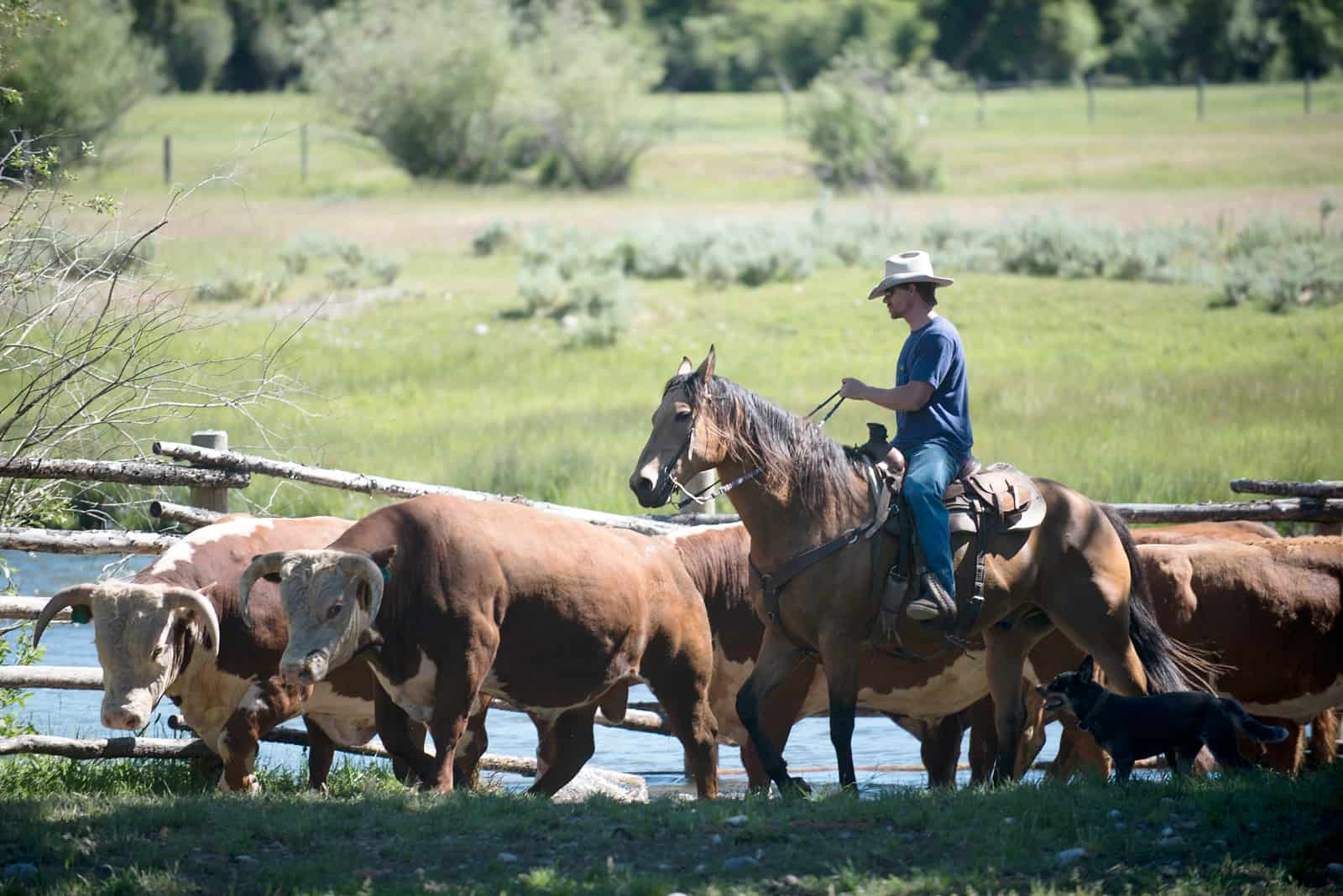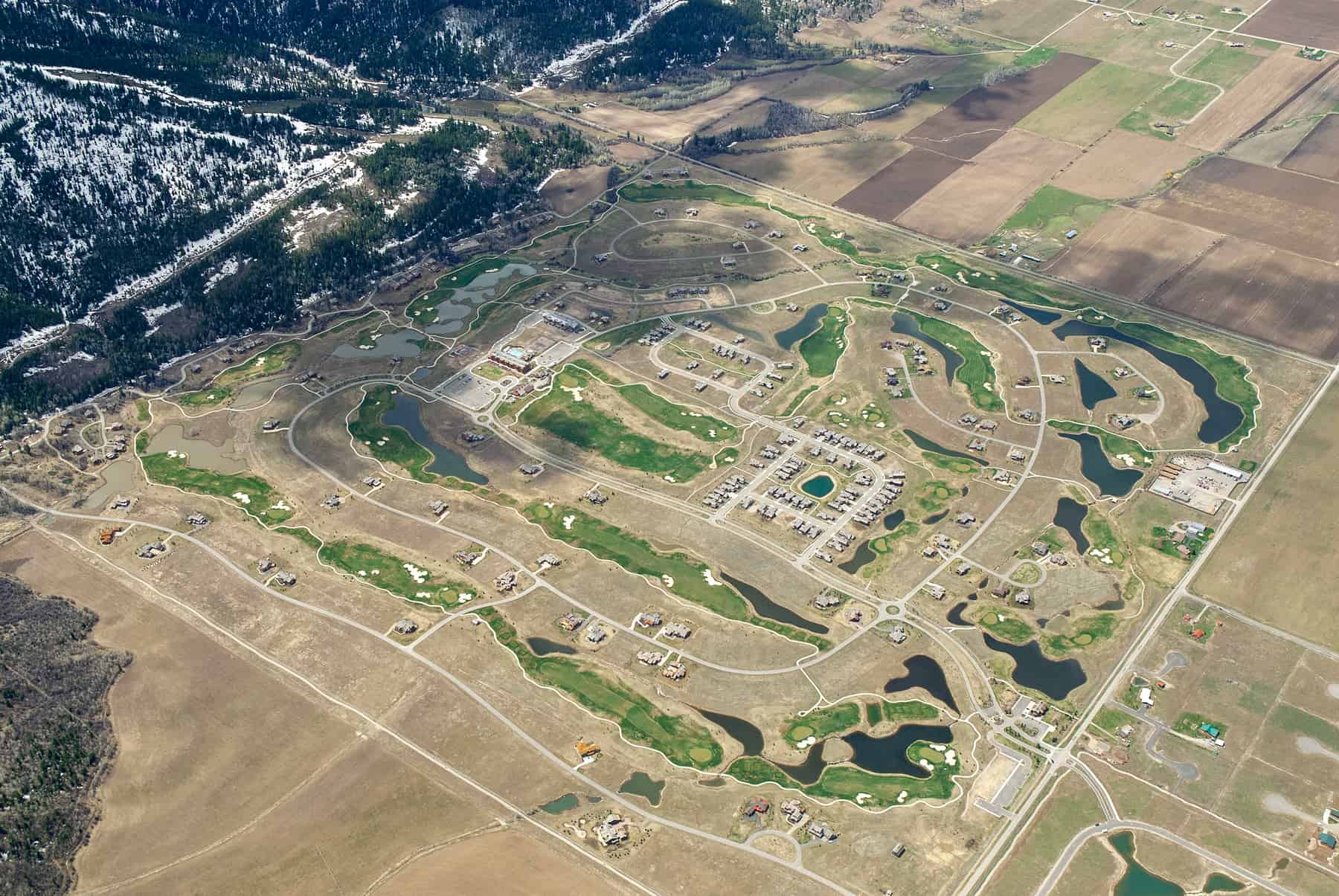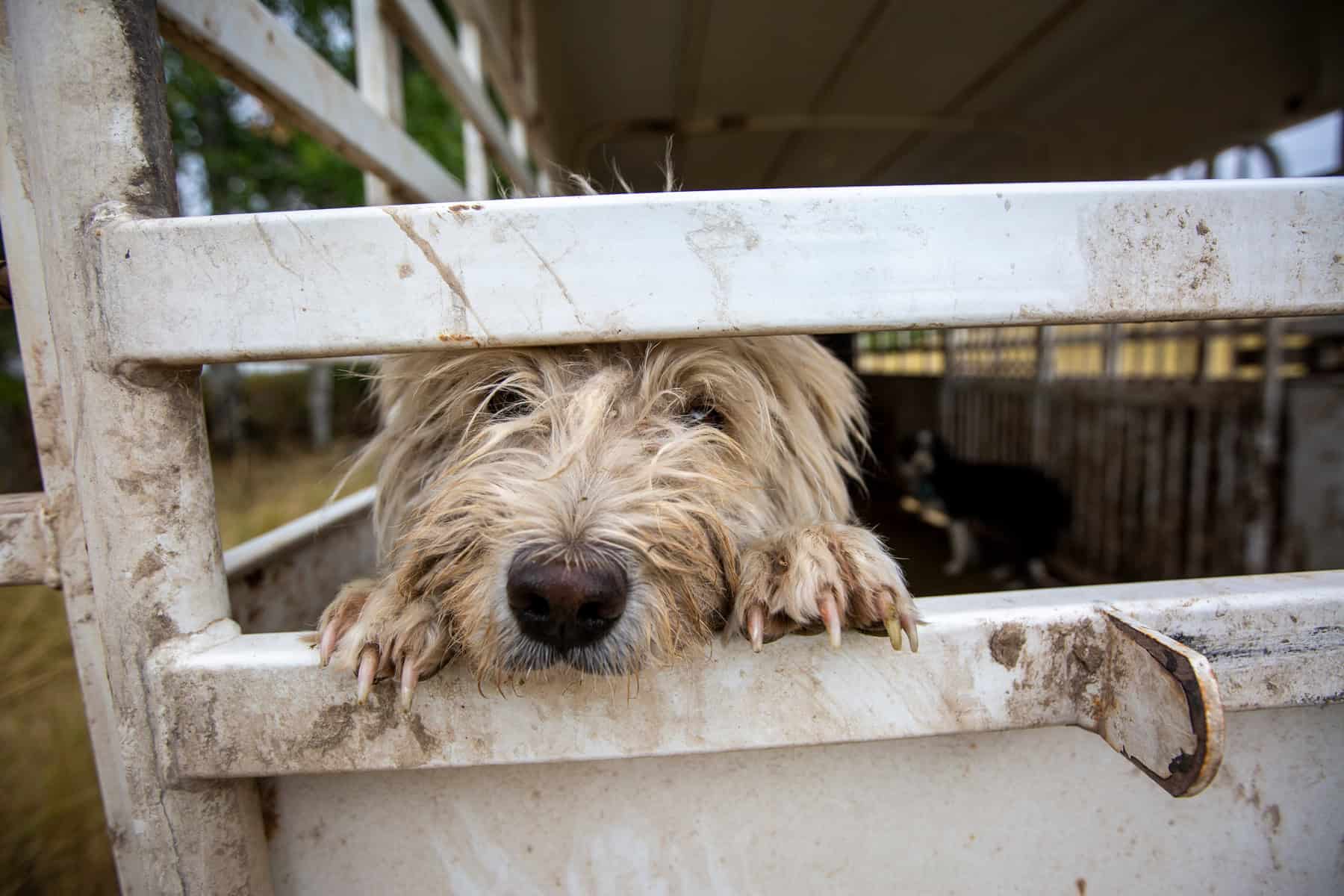By Molly Absolon // Photography by Bradly J. Boner
—
In the early 2000s, Lynn Bagley, who farms in the southern end of Teton Valley near Victor, Idaho, routinely received calls from speculators eager to buy his land.
“Back during the early boom, they were throwing out big bucks,” Bagley says. “I was definitely tempted, but I like open space too. If I were to drive around and see nothing but subdivisions, I wouldn’t want to be here.
“What happened then is starting to happen now,” he says. “With people wanting to get out of the big cities and taking advantage of the fact that they can work from home, realtors are, once again, trying to find any piece of land they can get their hands on to sell.”
For landowners, the lure of cash can be hard to resist. With less than 90 frost-free days a year, farming and ranching here is hard work that is often not profitable. Bagley thinks a lot of the people who sold out during the last boom didn’t really have a choice. A couple of bad years can send farmers deeply into debt and often the only way out is to sell off a few acres of their property. That has always been the case, but in 2000, land values suddenly skyrocketed, making the option even more lucrative. The going rate for agricultural land at the time was roughly $1,500 an acre. Then, Teton Springs Golf and Casting Club—the first big development in Teton Valley—launched a scheme to transform 740 acres in the southern end of the valley into an exclusive enclave with 600 residential units, a golf course, tennis courts, a swimming pool, hotel, spa, shops, and restaurants. They listed their lots for as much as a quarter of a million dollars apiece, which obviously made other landowners in the valley take notice. Suddenly the top blew off the real estate market, and everyone was scrambling to get rich quick.
“It was a perfect storm,” says Kathy Rinaldi. Rinaldi was the executive director of Valley Advocates for Responsible Development (VARD) during the boom, and was elected to the Teton County (Idaho) Board of County Commissioners in 2008—right after the market crashed. “Number one, the regulations in Teton County were really loose. Developers could come in and rezone cheaply and easily. Number two, by law in Idaho, there is an annual 3 percent cap on county budget increases. That doesn’t even keep up with inflation. That works for counties that are stagnant or declining, but it’s terrible for counties that are growing. New construction is not under the cap. It brings in a flood of money and resets the budget.”
Teton County, Idaho, found it hard to say no to the much-needed influx of cash brought in by the development boom. Furthermore, everyone was confident Teton Valley was going to become the next Jackson. Dollar signs became blinders. The Cassandra voices calling for caution were ignored. And, the City of Victor turned into an octopus with weird tentacles reaching out in different directions as property was annexed into city limits. The county added 7,200 platted lots—one for almost every resident—in countless subdivisions dotted around the valley. Some of these subdivisions included infrastructure—roads, water, sewer—others had nothing more than a fancy gate marking a fictional entrance into the community. Then, in August 2007, the market crashed. Overnight, the average home price in the county dropped 45 percent, while land prices fell 70 percent. A lot of people lost a lot of money, but at least for a while it seemed as if agriculture in Teton Valley, Idaho, was safe.
Unlike Teton Valley, Jackson was relatively immune to the Great Recession. Despite the overall state of the economy in the United States, people with resources continued to be drawn to the region by its proximity to Grand Teton and Yellowstone national parks, the recreational opportunities found in the national forests, the ski resorts, and the growing amenities of Jackson itself. As a result, land and home prices in Jackson Hole never really fell with the 2007 crash. Furthermore, with 97 percent of Teton County, Wyoming, being public land, there wasn’t enough private land available to fuel the kind of speculation that had occurred in its neighbor to the west. As a result, land values remained relatively stable throughout the recession and have surged to unprecedented levels in recent years. A 226-acre property, formerly known as the Puzzleface Ranch between Jackson and Wilson, was listed in 2019 for $35 million. It’s owner purchased the property without the newly-built 16,000-square-foot home just nine years before.
In the past few years, the Jackson effect has stimulated land sales in Idaho, with the pandemic pouring fuel on the fire. Values have risen—although not to the same levels seen in the early 2000s—and inventory has plummeted on both sides of the Tetons. But, Teton Valley, Idaho, realtor Eric Spitzer says this boom feels different.
“Last go-round, a lot of the people I dealt with were investors motivated by the idea that Teton Valley was the next Jackson,” Spitzer says. “Ninety percent of the market was speculative, whereas now the people I am working with are looking to move here.”
Regardless of whether a boom is motivated by speculation or an influx of people, the pressure on agricultural lands remains the same. Large open tracts of farmland add value to an area. They provide habitat for wildlife, they help maintain viewsheds, they minimize crowding, and help preserve an area’s culture and history. But it’s hard for a landowner to cash in on those values without actually selling his or her property.
Land trusts—the Jackson Hole Land Trust and the Teton Regional Land Trust in Teton Valley, Idaho—use conservation easements to help landowners benefit from some of these intangible values.
For instance, in Teton County, Wyoming, the Jackson Hole Land Trust has protected 9,771 acres of working ag land through conservation easements with ten different operations. These easements allow people to capitalize on the value of their land without having to sell, and for many, this may mean the difference between continuing to ranch or subdividing.
Easements have protected thousands of acres of agricultural land on both sides of the Tetons. According to the Teton Regional Land Trust’s website, its efforts have helped preserve 54 miles of riverfront, 5,000 acres of wetlands, and 165 properties, much of that ag land.

Some farmers and ranchers have found other ways to stay in business despite rising land values. The Lockhart Cattle Company, outside Jackson, established its niche by tapping into the local food movement, offering grass-fed beef born, raised, and butchered in Teton County, Wyoming.
“We looked around at Jackson’s tourism industry,” says Chase Lockhart. “If half of the five million tourists eat hamburgers while they’re here, and if we could sell them a fifth of that hamburger, that’s still a lot of hamburger.”
The local food movement has also helped support a number of small organic farms and ranches in Teton Valley, Idaho, including Cosmic Apple Farm, Full Circle Farm, and Crowfoot J Ranch, as well as several newer operations. These farms rely on community-supported agriculture programs, restaurants, and farmers’ markets to sell the bulk of their produce and meat. But community-supported agriculture (CSAs) and farmers’ markets don’t work for some of the more traditional farms in the valley.
“I raise hay for horses,” Bagley says. “I can’t take bales of hay to the farmers’ market.”
Bagley wants people to recognize how important agriculture is to the character of Teton Valley and to, as he says, “think outside the box” to help farmers.
“I’m not looking for more rules and regulations, but if ag goes away, we know what’s coming,” he says. “We need to do something to make it a viable option.”
Gary Armstrong, the Teton County, Idaho, planning administrator, thinks there is reason to be optimistic about the future of open space in the valley. He has recently had two conservation buyers step in and purchase entire platted subdivisions—one with ten lots, the other with thirty—to transform into wildlife habitat, thereby wiping the subdivisions off the map.
And, Shawn Hill, the executive director of VARD, thinks the new buyers moving into Teton Valley are coming here because they value the small-town feel and open spaces. He believes that shift in attitude will help farming remain a viable alternative, despite rising land prices.




